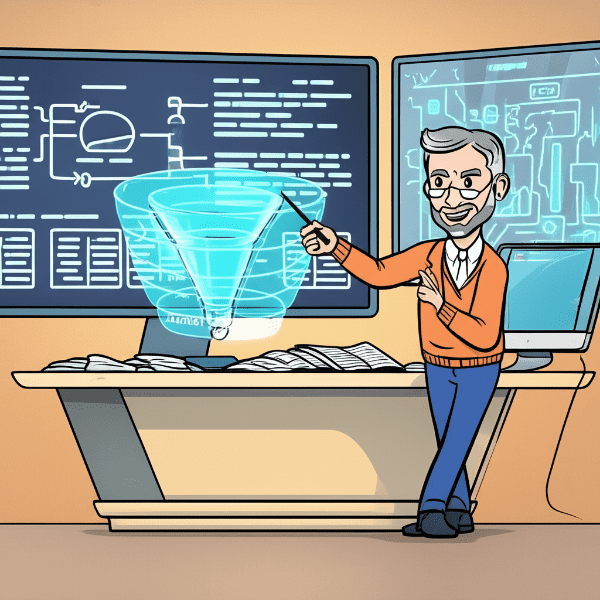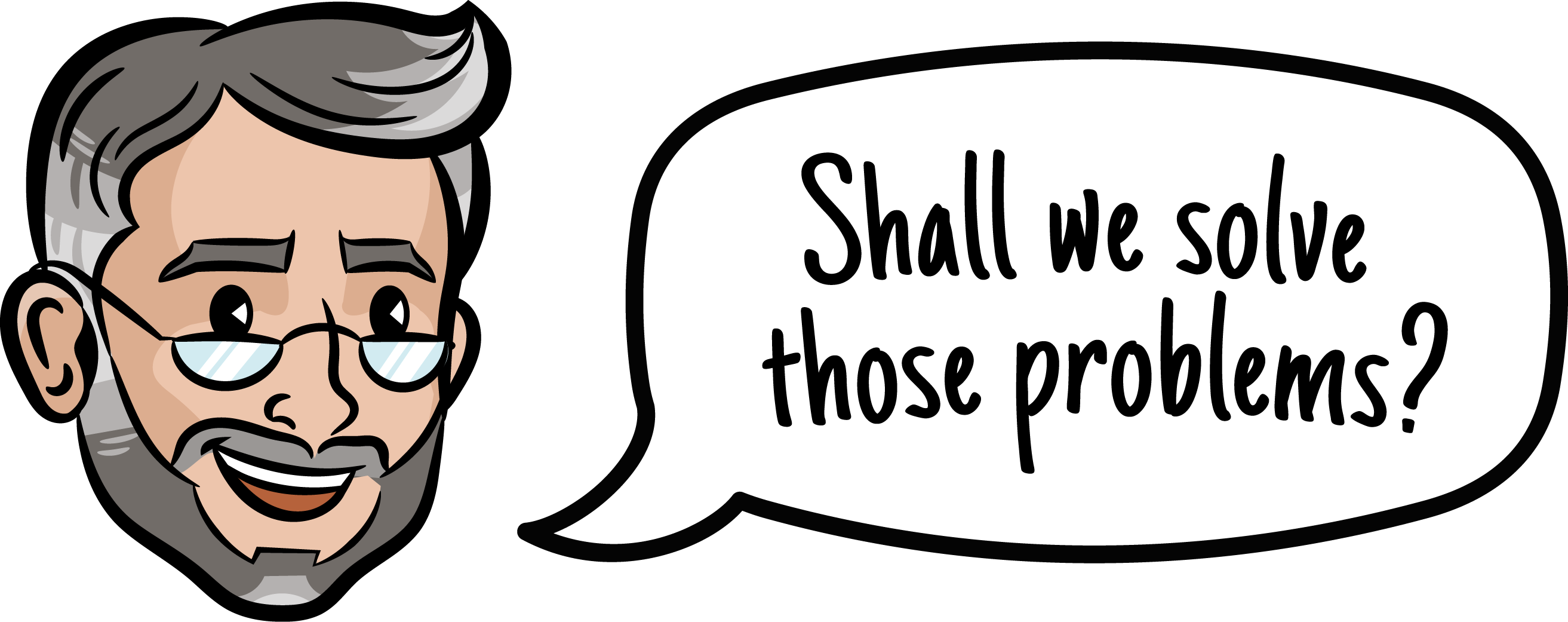Table of Contents
The Strategic Imperative: Why Funnel Building is Critical for Growth Leaders
Deconstructing the Funnel: Core Concepts for Leaders
The Blueprint: How to Build a Conversion Funnel for Your Business
Tactical Execution: Key Components of Your Marketing Funnel Strategy
Measurement, Analysis, and Optimization: Ensuring Funnel Health
Common Funnel Building Pitfalls and How to Avoid Them
Bridging the Gap: Aligning Sales and Marketing for Funnel Success
Leading the Charge: Implementing and Scaling Advanced Funnel Building
Useful Related Posts from Sales Funnel Professor
Are you overseeing sales and marketing and constantly questioning why more leads aren’t turning into customers? Perhaps your teams are busy with tactics—running campaigns, sending emails, making calls—but the path from initial contact to closed deal feels more like a tangled mess than a smooth journey. The missing link often lies in lacking the right Sales Funnel Building Skills. Many think funnel building is just about designing a landing page or sending a few emails, but true mastery of these skills is what transforms scattered activities into a cohesive, high-converting sales and marketing engine.
For growth leaders like you, understanding the underlying principles and possessing clear Sales Funnel Building Skills isn’t just beneficial; it’s essential. It’s the difference between scattered activities and a cohesive, high-converting sales and marketing engine. This guide is your blueprint, designed to equip you with the strategic perspective and practical steps needed to build and optimize sales and marketing funnels that drive predictable growth.
The Strategic Imperative: Why Funnel Building is Critical for Growth Leaders
In today’s competitive landscape, a well-defined and optimized funnel is not a luxury; it’s a fundamental requirement for sustainable business growth. It transforms the often chaotic path of a potential customer into a clear, measurable process.
Understanding the link between effective funnels and predictable revenue growth is paramount. A robust sales funnel stages the buyer’s journey logically, allowing sales and marketing teams to deploy the right resources and messages at the right time. This structure provides a clear roadmap for the customer journey, from their first moment of awareness to becoming a loyal customer. Without this roadmap, efforts are disjointed, leads fall through the cracks, and forecasting becomes guesswork.
Developing strong Sales Funnel Building Skills helps you align business objectives with funnel design to scale sales and marketing efficiently. By defining the process, identifying bottlenecks, and measuring performance at each step, you can invest resources where they have the greatest impact, automate repetitive tasks, and replicate successful strategies across different segments or product lines. It’s about building a scalable system, not just running individual campaigns.

Deconstructing the Funnel: Core Concepts for Leaders
Before diving into the mechanics of how to build a conversion funnel, it’s vital for leaders to grasp the foundational concepts. The “funnel” is a conceptual model representing the steps a prospect takes toward becoming a customer. While the modern customer journey can be non-linear, the funnel provides a necessary framework for organizing sales and marketing activities.
Understanding Sales and Marketing Funnel Stages (TOFU, MOFU, BOFU)
The most common way to segment the funnel is into three primary stages, each corresponding to a different phase of the buyer’s journey and requiring a distinct approach from your teams:
- Top of Funnel (TOFU): Awareness and Discovery. Prospects first become aware of a problem or need and start seeking information or solutions. They’re researching and exploring without brand loyalty yet.
- Middle of Funnel (MOFU): Consideration and Evaluation. Prospects actively research solutions and compare options. They look for detailed info and reasons to prefer one solution over another.
- Bottom of Funnel (BOFU): Decision and Conversion. Prospects have narrowed options and are ready to decide. They seek trust signals, pricing, demos, and testimonials to finalize the purchase.
Leaders with refined Sales Funnel Building Skills better understand how to map customer journeys and stage prospects effectively through TOFU, MOFU, and BOFU. This allows sales and marketing teams to create the right content and interactions at the right time.
The Blueprint: How to Build a Conversion Funnel for Your Business
Building a high-converting funnel is a strategic, multi-step process requiring planning, execution, and iteration. Here is a blueprint to guide your teams:
Step 1: Define Your Ideal Customer Profile (ICP) and Buyer Personas
Understanding who you are trying to reach is the foundation of Sales Funnel Building Skills. Detailed personas include demographics, firmographics, psychographics, pain points, information sources, buying criteria, and objections. Use sales insights, customer interviews, and CRM data.
Step 2: Map the Customer Journey to Funnel Stages
Visualize prospect actions and information needs at each stage (TOFU, MOFU, BOFU). For example, a prospect moves from reading a blog post (TOFU) to downloading an ebook (MOFU) to requesting a demo (BOFU).
Step 3: Set Clear, Measurable Goals and KPIs for Each Stage
Define conversion rate targets, lead volumes, velocity, drop-off points, CPA, MQLs, SQLs, and win rates. These KPIs track funnel health and effectiveness.
Step 4: Design the Core Funnel Architecture and Key Conversion Points
Outline interactions and assets prospects encounter, focusing on measurable actions like newsletter signups (TOFU), whitepaper downloads (MOFU), and demo requests (BOFU).
Step 5: Develop Content and Offers Tailored to Each Funnel Stage
Use educational content for TOFU, solution-oriented content for MOFU, and trust-building content for BOFU. Align content with your buyer personas.
Step 6: Build the Technical Foundation (Landing Pages, Forms, CRM, Automation)
Create optimized landing pages and forms, leverage CRM for lead management, and use marketing automation for nurture sequences.
Step 7: Implement Strategies to Drive High-Quality Traffic
Use inbound (content marketing, SEO, social media) and outbound (paid ads, cold outreach) strategies targeting your ICP.
Tactical Execution: Key Components of Your Marketing Funnel Strategy
Lead Generation (TOFU)
Maximize reach with SEO, paid ads, social, events, and partnerships to attract the right prospects.
Lead Nurturing and Qualification (MOFU)
Build relationships using email sequences, lead scoring, and dynamic personalization to identify and engage qualified leads.
Conversion Strategies and Sales Handoff (BOFU)
Optimize CTAs, landing pages, and establish seamless marketing-to-sales handoff processes.
Measurement, Analysis, and Optimization: Ensuring Funnel Health
Track and analyze key funnel metrics to maintain optimal performance:
- Conversion Rates: Measure how prospects move from one funnel stage to the next, identifying strengths and weaknesses.
- Drop-off Points: Pinpoint exactly where prospects leave the funnel to uncover bottlenecks or friction.
- Cost Per Acquisition (CPA): Monitor marketing spend efficiency to ensure you’re getting value for your investment.
- Customer Lifetime Value (LTV): Understand the long-term revenue potential of each customer to prioritize high-value leads.
- Lead Velocity Rate (LVR): Track the month-over-month growth rate of qualified leads, a strong predictor of future revenue.

To support this analysis, use:
Custom Leadership Reports: Tailored summaries focusing on high-level trends and KPIs for strategic decision-making.
CRM Dashboards: For real-time funnel performance and detailed pipeline insights.
Google Analytics: To gain behavioral insights into website traffic, user journeys, and conversion paths.
Common Funnel Building Pitfalls and How to Avoid Them
- Lack of clear stage definitions
- Ignoring MOFU nurturing
- Poor sales and marketing alignment
- Over-focusing on traffic, not conversion
- Neglecting measurement and analysis
- Overly complex funnels
Bridging the Gap: Aligning Sales and Marketing for Funnel Success
Alignment improves funnel efficiency and conversion. Use shared definitions, regular meetings, shared dashboards, and clear lead handoff processes.
Leading the Charge: Implementing and Scaling Advanced Funnel Building
Evaluate internal vs. external capabilities, integrate essential tech (CRM, automation, analytics), foster a data-driven culture, and document processes for scaling.
Useful Posts
To deepen your understanding and support your funnel-building journey, check out these carefully selected resources from Sales Funnel Professor:
- Sales Funnel Audit: More Than Just CRO
Our sales funnel audit is more than just a conversion rate optimization report. We fix funnels end-to-end. Get your recommendations in 5 days. - What Is a Marketing Funnel? Stages, Strategies & How to Optimize
Master the marketing funnel stages and optimization strategies to improve conversions and boost your overall marketing results. - Sales Funnel Metrics That Drive Revenue
At Sales Funnel Professor, we’ve audited hundreds of funnels and the same issue keeps showing up: teams track too much and act on too little. - Conversion Rate Optimization (CRO) Agency ROI
Discover how a CRO agency drives higher conversions, lowers costs, and delivers clear ROI for your business growth. - B2B Marketing Funnel Basics
Master the B2B marketing funnel basics with expert strategies and data-driven techniques to improve lead generation and conversions. - Optimizing B2B Marketing Funnel Stages for Peak Revenue Conversion
Optimizing B2B marketing funnel stages helps stop revenue leaks, boost conversions, and drive predictable, scalable business growth. - Done For You Sales Funnel: Outsource for Faster Growth
Outsource your sales funnel with a done-for-you service to speed growth, free resources, and boost conversions with expert execution. - The Core Components of a Winning Marketing Strategy
Discover the core components of a winning marketing strategy that align business goals, engage customers, and drive sustainable growth.


